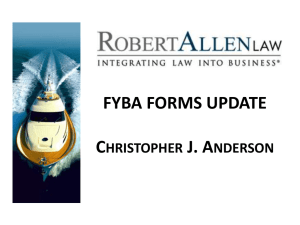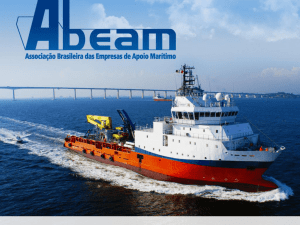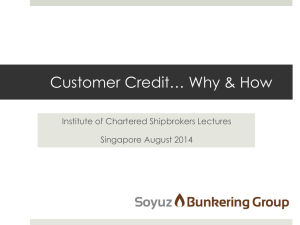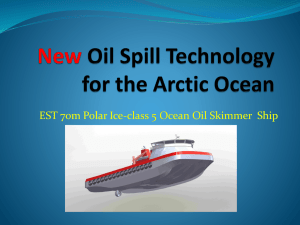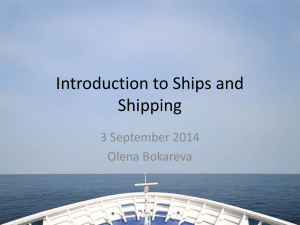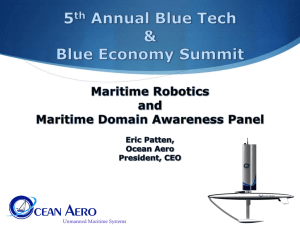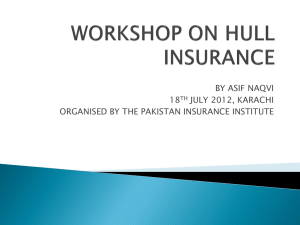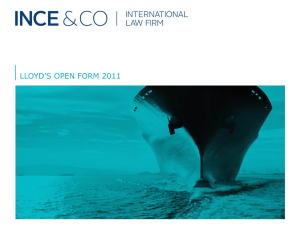master oral part 2 - mmm
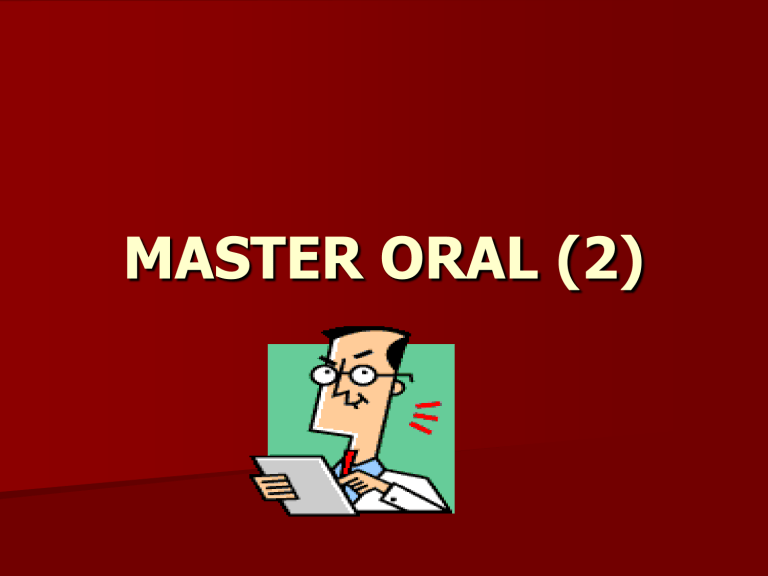
MASTER ORAL (2)
How many standard charter party forms do you know?
Voyage Charter
1. Cementvoy cement, clinker cement
2. Amwelsh 93, Polcoalvoy, Nipponcoal –
Coal
3. Ferticon, Fertivoy 88, Qafcocharter –
Fertilizer
4. Gencon, Worldfood – GC
5. Austwheat, Synacomex 90, Norgrain
89, Grainvoy - Grain
Voyage Charter (continued)
6. Nipponore, Orevoy – Ore
7. Panstone – Stone
8. Nubaltwood, Russwood, Nanyozai 1997
- Wood
Time Charter
1. Baltime 1939 – amended 1950, 1974
BIMCO Uniform
2. Linertime – BIMCO TC for liners
3. Boxtime = BIMCO TC for containers
4. NYPE 93 – Newyork Prudence
Exchange
5. Barecon 89 – BIMCO Bareboat charter
What is Documentary Credit System?
The documentary credit can also be called a
"commercial credit" and the system is one that is controlled by banks, which provide finance for buying and selling goods.
Commercial letters of credit have been used as a most common method of payment, in international trade.
Letters of credit used in international transactions are governed by the
International Chamber of Commerce
Uniform Customs and Practice for
Documentary Credits (UCP).
A commercial letter of credit is a contractual agreement between a bank (issuing bank), on behalf of one of its customers (buyer), authorizing another bank (advising or confirming bank) , to make payment to the beneficiary (seller). The issuing bank , on the application of its customer (buyer), opens the letter of credit , and makes a commitment with the buyer to honour the credit on the presentation of the documents , conforming to the terms and conditions of the credit , by the beneficiary(seller) . Thus, the issuing bank pays on behalf of the buyer.
Elements of a Letter of Credit
A payment undertaking given by a bank
(issuing bank)
On behalf of a buyer (applicant)
To pay a seller (beneficiary) for a given amount of money
On presentation of specified documents representing the supply of goods
Within specified time limits
Documents must conform to terms and conditions set out in the letter of credit
Documents to be presented at a specified place
Step-by-step process
Buyer and seller agree to conduct business.
The seller wants a letter of credit to guarantee payment.
Buyer applies to his bank for a letter of credit in favour of the seller.
Buyer's bank approves the credit risk of the buyer, issues and forwards the credit to its correspondent bank (advising or confirming).
The correspondent bank is usually located in the same geographical location as the seller
(beneficiary).
Advising bank will authenticate the credit and forward the original credit to the seller
(beneficiary).
Seller (beneficiary) ships the goods, then verifies and develops the documentary requirements to support the letter of credit. Documentary requirements may vary greatly depending on the perceived risk involved in dealing with a particular company.
Seller presents the required documents to the advising or confirming bank to be processed for payment.
Advising or confirming bank examines the documents for compliance with the terms and conditions of the letter of credit.
If the documents are correct, the advising or confirming bank will claim the funds by:
Debiting the account of the issuing bank.
Waiting until the issuing bank remits, after receiving the documents.
Reimburse on another bank as required in the credit.
Advising or confirming bank will forward the documents to the issuing bank.
Issuing bank will examine the documents for compliance. If they are in order, the issuing bank will debit the buyer's account.
Issuing bank then forwards the documents to the buyer.
What is Running down (Collision Liability) Clause;
What is ¾ Running down Clause?
Marine Insurance Hull and Machinery
The Underwriters agree to indemnify the Assured of any sum or sums in full (4/4 th RDC) paid by the
Assured to any other person or persons by reason of the Assured becoming legally liable by way of damages for
1.
2.
3.
loss of or damage to any other vessel or property on any other vessel delay to or loss of use of any such other vessel or property thereon general average of, salvage of, or salvage under contract of, any such other vessel or property thereon, where such payment by the Assured is in consequence of the vessel hereby insured coming into collision with any other vessel.
When the Underwriters agree to indemnify the
Assured for three quarter of any sum or sums paid by the Assured to any other person or persons it is called (3/4 th RDC)
P&I
P&I covers 1/4 th Collision liability when not covered by Hull and Machinery.
Also covered liability caused by collision with Fixed and Floating Objects F.F.O.
What kind of Certificates that can’t be issued by Classification Society?
1.Certificates that are required to be issued by Flag State a) Certificate of Registry b) Minimum Safe Manning Document/
Certificate
2.Ship sanitary exemption Certificate issued by Port Health
What are Safe Port, Safe Berth, Laycan,
Reversible layday and arrived ship?
Safe Port -any port where a ship and its cargo can be protected from the hazards of the sea as well as perils of political, natural, or other nature
Safe Berth - a berth where the ship can be protected from the hazards of the sea.
Laycan - This is an abbreviation for the "Laydays and
Cancelling" clause in a charterparty. This clause establishes the earliest date, when the ship is required by the charterer,
(e.g. "Laytime for loading shall not commence before . . .") and the latest date for the commencement of the charter (e.g. “ . . . and should the vessel's Notice of Readiness not be given before . . . ") when the charterers have the option of cancelling the charter.
Reversible laydays and arrived ship See Part 1
What will you do when Cargo owner run away in GA?
The process of adjusting a general average sacrifice or expenditure begins with the "declaration" of general average, which is ordinarily made by the shipowner through his underwriters.
Where cargo has been sacrificed, the shipowner must obtain security from other cargo before delivering it.
Such security normally takes the form of a “general average bond” (often a Lloyd's Average Bond), GA cash deposit, or an undertaking from a cargo underwriter.
The ship has a possessory lien for the general average contribution payable by cargo in most jurisdictions if the cargo owner run away.
What are the Marine Losses?
Marine Losses
1. Total loss a) Actual total loss or b) Constructive total loss.
Actual total loss -subject matter is completely destroyed or so damaged that it ceases to be a thing of the kind insured. e.g. sinking of ship, complete destruction of cargo by fire
Constructive total loss -the ship or cargo insured is not completely destroyed but is so badly damaged that the cost of repair or recovery would be greater than the value of the property saved. e.g. a ship dashed against the rock and is stranded in a badly damaged position. If the expenses of bringing it back and repairing it would be more than the actual value of the damaged ship, it is abandoned.
Partial loss
A partial loss occurs when the subject matter is partially destroyed or damaged.
Partial loss can be
(a) General Average
(b) Particular Average
(c) Salvage Charges
GENERAL AVERAGE
There is a general average act when, and only when, any extraordinary sacrifice or expenditure is intentionally and reasonably made or incurred for the common safety for the purpose of preserving from peril the property involved in a common maritime adventure.
There must be a common adventure (the ship, freight, cargo)
The common adventure must be in peril
There is a sacrifice or expenditure
The sacrifice/expenditure is made or incurred reasonably and intentionally for the sole purpose of preserving the adventure from the immediate peril.
This attempt to avoid the imminent common peril must be successful.
Particular average may be defined as a loss arising from damage accidentally caused by the perils insured against.
If a ship is damaged due to bad weather the loss incurred is a particular average loss.
Salvage charge
Salvage is payment by the owner of property to other person for saving cargo or ship from damage. Sometimes the ship is in danger on the sea and it is saved from the loss or damage by third party. Such party, therefore has right to receive reward from the owner in exchange for its efforts. If the owners refuse to pay salvage, the third person can enforce a claim in the competent court according to the maritime laws.
What is Classification Society?
A classification society is a nongovernmental organization that establishes and maintains technical standards for the construction and operation of ships and offshore structures .
Classification societies set technical rules, confirm that designs and calculations meet these rules, survey ships and structures during the process of construction and commissioning, and periodically survey vessels to ensure that they continue to meet the rules.
SOLAS 74, Load Lines 66, MARPOL 73/78 and STCW
78 and other Conventions allow Administrations to entrust the inspections, surveys and the issue of certificates to Recognized organizations (RO are Classification Societies.
), which
Administrations authorize classification societies, which are already Recognized Organizations for conducting statutory survey , for approving SSP and issuing ISSC as Recognized Security Organizations
(RSO).
SOLAS 74, Load Lines 66, MARPOL 73/78 and STCW
78 and other Conventions allow Administrations to entrust the inspections, surveys and the issue of certificates to Recognized organizations (RO are Classification Societies.
), which
Administrations authorize classification societies, which are already Recognized Organizations for conducting statutory survey , for approving SSP and issuing ISSC as Recognized Security Organizations
(RSO).
What is IMO?
The International Maritime Organization (IMO), known as the Inter-Governmental Maritime
Consultative Organization (IMCO) until 1982, [3] was established in Geneva in 1948, [4] and came into force ten years later, meeting for the first time in
1959.
The Organization consists of an Assembly, a Council and five main Committees:
• the Maritime Safety Committee;
• the Marine Environment Protection Committee;
• the Legal Committee;
• the Technical Co-operation Committee and the
• Facilitation Committee and a number of Sub-Committees support the work of the main technical committees.
[6]
The governing body of the International
Maritime Organization is the Assembly which meets every two years. In between Assembly sessions a Council, consisting of 40 Member
States elected by the Assembly, acts as the governing body.
What is tacit/ explicit acceptance, amendments and Protocols?
Technology and techniques in the shipping industry change very rapidly these days. As a result, not only are new conventions required but existing ones need to be kept up to date by means of amendments.
The amendments once agreed are set out as
Protocols (Rules/ agreement)
To avoid long delays in bringing amendments into force a new amendment procedure was devised in IMO called "tacit acceptance" procedure.
The "tacit acceptance" procedure provides that an amendment shall enter into force at a particular time unless, before that date, objections to the amendment are received from a specified number of Parties.
The “explicit acceptance” procedure is that an amendment shall enter into force when being accepted by all member state.
What considerations are to be made by Master before accepting Salvage Assistant?
There are different Classes of Salvage;
1. Offshore Salvage
2. Harbour Salvage
3. Cargo and Equipment Salvage
4. Wreck removal
5. Afloat salvage
6. Clearance salvage
7. Contract salvage
8. Pure salvage
In pure salvage (also called "merit salvage"), there is no contract between the owner of the goods and the salvor. The relationship is one which is implied by law.
In order for a claim to be awarded three requirements must be met:
1. The property must be in peril,
2. the services must be rendered voluntarily
(no duty to act),
3. the salvage must be successful in whole or in part.
The Salvage award considered on;
1. the difficulty of the operation,
2. the risk involved to the salvor,
3. the value of the property saved,
4. the degree of danger to which the property was exposed, and the
5. potential environmental impacts.
In order for a claim to be awarded three requirements must be met:
1. The property must be in peril,
2. the services must be rendered voluntarily
(no duty to act),
3. the salvage must be successful in whole or in part.
The Salvage award considered on;
1. the difficulty of the operation,
2. the risk involved to the salvor,
3. the value of the property saved,
4. the degree of danger to which the property was exposed, and the
5. potential environmental impacts.
Pure salvage claims are divided into "highorder" and "low-order" salvage.
In high-order salvage, the salvor exposes himself and his crew to the risk of injury and loss or damage to his equipment in order to salvage the property that is in peril. Examples of high-order salvage are boarding a sinking ship in heavy weather, boarding a ship which is on fire.
Low-order salvage occurs where the salvor is exposed to little or no personal risk. Examples of low-order salvage include towing another vessel in calm seas, supplying a vessel with fuel, or pulling a vessel off a sand bar.
A vessel is considered in peril if it is in danger or could become in danger.
Examples of a vessel in peril are when it is aground or in danger of going aground.
Prior to a salvage attempt the salvor receives permission from the owner or the master to assist the vessel.
If the vessel is abandoned no permission is needed.
Before Salvage assistant is accepted the master should depending on the nature of assistant he needs, shall consider;
1. The Vessel and its cargoes are in peril
(real danger)
2. The losses likely to occurred to ship and cargoes, from said perils and likeliness of pollution.
3. Whether the situation actually needs assistant.
4. Seeking owner’s instruction if time permit.
What is Policy Proof of Interest (PPI)?
Wagering or Honour policy:- In marine insurance, a provision whereby the insurer agrees not to deny coverage for lack of insurable interest. This creates an honorable rather than legally enforceable agreement.
( insurable interest
မ႐ွိ ေသာ္သ ည္း သ
႐ွိ ာဲ႕သာ ေသး ေသည ္သ နေသေဘာ္ူထားေ္ ေသး ေသာ္အ္မခံ
)
.
Such policies are also known as 'Policy Proof of
Interest(P.P.I).
A notation on an insurance policy used to indicate that the policy itself is proof of an Assured insurable interest in the property; no further proof of such interest need be submitted by the Assured to collect a covered loss.
What is “MOLOO” and MOLCO”?
It is an agreement in voyage charter between a charterer and a shipowner, disponent owner or carrier for the carriage of a stated minimum quantity to be loaded, with a “more-or-less” margin at the option of either the owners (More or less owner’s option, MOLOO) or the charterers (More or less charterer’s option, MOLCO).
If the cargo loaded is within this range no dead freight or liability is applicable on the quantity.
What is Peril?
In Marine Insurance a peril is something that can cause a loss.
"Maritime Perils" mean perils consequent on, or incidental to, the navigation of the sea, that is to say, perils of the sea, fire, war perils, pirates and rovers, thieves, captures, seizures, restraints and detainment of princes and peoples, jettisons, barratry and any other perils which are either of the like kind or may be specified by the policy.
Perils of the seas cover losses caused by seawater, stranding, cyclone, storm, lightning, fog, rough weather, collision with other ship, striking upon a sunken rock or icebergs.
What is Deadfreight and Demurrage?
Dead Freighta form of compensation payable by the charterer or shipper to the shipowner when the charterer is unable to load the cargo quantity agreed in the charterparty ; the amount payable is the loss of freight equivalent to the cargo unavailable
Demurrage - The sum payable by the charterer to the shipowner when the latter's ship is detained beyond the specified date (agreed number of laydays) agreed in the charterparty
In usual practice the charterer’s liability is limited to an agreed sum in respect of each day and/or fraction of a day of the delay.
Opposite of despatch
Days during which the ship is delayed are referred to as Demurrage days
Once on Demurrage always on Demurrage
Means Demurrage days are always Running Days, irrespective of the kind of Laydays contracted for.
What is a Franchise Clause?
Provision in marine insurance policies that disallows claims below a certain minimum amount or percentage of loss except, a ship sinks or is stranded.
What is Liner trade?
A service that operates within a schedule and has a fixed port rotation with published dates of calls at the advertised ports..
A liner service generally fulfills the schedule unless in cases where a call at one of the ports has been unduly delayed due to natural or man-mad causes.
What is a Tramp ship?
Tramp Service or tramper on the other hand is a ship that has no fixed routing or itinerary or schedule and is available at short notice
(or fixture) to load any cargo from any port to any port..
What is Arbitration?
Arbitration, a form of alternative dispute resolution (ADR), is a technique for the resolution of disputes outside the courts , where the parties to a dispute refer it to one or more persons (the "arbitrators", "arbiters" or " arbitral tribunal "), by whose decision (the
" award ") they agree to be bound.
Advantages of Arbitration
1. when the subject matter of the dispute is highly technical, arbitrators with an appropriate degree of expertise can be appointed (as one cannot "choose the judge" in litigation)
2. arbitration is often faster than litigation in court
3. arbitration can be cheaper and more flexible for businesses
4. arbitral proceedings and an arbitral award are generally non-public, and can be made confidential
5. in arbitral proceedings the language of arbitration may be chosen, whereas in judicial proceedings the official language of the country of the competent court will be automatically applied
What is SCOPIC Clause?
In 1989 representatives from the
Governments of 65 nations agreed to a new
Salvage Convention, which created a new concept, Special Compensation .
This provided salvors with a safety net whenever there was a "threat of damage to the environment".
It encouraged Salvors to proceed to the assistance of a ship which threatened damage to the environment secure in the knowledge they would at least recover their expenses; by the Owners and Hull
Underwriters,
It was immediately adopted by Lloyds, who amended the Standard Form of
Salvage Contract Lloyds Open Form
("LOF") in 1990 and produced LOF 90 before Convention came into force.
The Contract was subsequently amended to LOF 95 when the Salvage Convention actually came into force in the UK.
The Special Compensation Provisions have, therefore, applied to all LOF cases since 1990.
The concept of Special Compensation, the experience gained from the cases that have arisen since 1990 has shown that the mechanics of assessing Special
Compensation in accordance with the provisions of Article 14, has proved to be time consuming, cumbersome, expensive and uncertain . The problems may be summarised as follows:
The SCOPIC Clause is meant to be an alternative option for the contracting parties to agree to replace the salvage convention article 14 when signing a
Lloyd’s open form salvage contract
SCOPIC to Lloyd’s Open Form has been designed so that it can be incorporated into a LOF Contract by the contracting parties
(the shipowner and the salvor) simply agreeing that the LOF Contract includes the
SCOPIC Clause. This can be done verbally, but ideally should be in writing.
The SCOPIC Clause itself has 15 clauses which set out the basis scheme, and 3 appendices.
It sets out the position between the salvors and insurers of the shipowners and the cargo, are not parties to the Contract.
Their position has been dealt with by two
Codes of Practice. One between the ISU and the International Group of P&I Clubs, and another between the Internal Group of P&I
Clubs and the Property Underwriters. In the interest of completeness, both Codes are set out, later in this paper.
1. General: SCOPIC clause is supplementary to any Lloyd’s Form Salvage Agreement
“No Cure - No Pay” (“Main Agreement”)
2. Invoking the SCOPIC Clause
3. Security for SCOPIC Remuneration
4. Withdrawal
5. Tariff Rates
6. Article 13 Award
The salvage services under the Main
Agreement shall continue to be assessed in accordance with Article 13, even if the
Contractor has invoked the SCOPIC clause
7. Discount
8. Payment of SCOPIC Remuneration
9. Duties of Contractor
10.Special Casualty Representative (“SCR”)
11. Special Representatives -
Owner/Hull/Cargo
12.Pollution Prevention
13.General Average - SCOPIC remuneration shall be that of the Shipowner alone and shall not be a General Average expense
14. Arbitration
Summary
LOF was established in 1908 by Committee of Lloyd’s as an international standard salvage agreement.
The characteristic of LOF is so called “No cure-No pay.”
However, to meet with increasing attention to the environmental protection, radical changes Salvage Agreement and SCOPIC have been made to the principle of “No cure-No pay” by the introduction of Safety Net and Special
Compensation since the 1980s. Then, in LOF2000 which came into use on 1 September 2000, the SCOPIC Clause was incorporated.
LOF 1980 : Introduction of Safety Net
LOF 1990 : Incorporation of International Convention on
Salvage 1989 Introduction of Special Compensation Article 14
LOF 1995 : Revision following the changes of UK Maritime
Shipping Act
LOF 2000 : Introduction of SCOPIC Clause
LOF 2011 : The latest version incorporating SCOPIC 2005 &
2007
TOWING OPERATIONS
Vessels may require to be towed for a variety of reasons such as a disabled engine, damaged structures, etc
The average vessel may also perform a tow out of sheer necessity but there are certain considerations you need to make:
Fittings and structure of the vessel are not specifically designed for towing
May not be strong enough to bear the weight or be shock loaded.
May cause damage or stress to structure of vessel
May cause undue wear on tow line
Manoeuvrability of the towing vessel is restricted
The rope used for towing may not be completely suitable as a tow line
The possible absence of expertise in towing operations
Measures to be done on both the vessel in tow and the towing vessel.
Keep personnel clear of tow line.
Warn everyone of the risks of parting tow line and possibility of damage to vessel’s structure
use a longer tow line provides better shock absorption
use anchor chain as shock buffer if available
secure the tow line at more than one securing point to share the strain
take steps to prevent chaffing of tow line.
MARINE CASUALTIES
Whenever a vessel is involved in an accident, the master must make every effort to limit the damage and maintain the safety of the vessel and all persons on board.
In some cases, the master is legally obliged to assist other vessels and persons who may also be involved in the accident.
Most marine authorities require the master to report any accident that results in major damage to the vessel, other vessels or things, or injury to a person.
Such incidents are usually called
"marine casualties".
Examples of marine casualties include :
collisions with other vessels or things; running aground; sinking of a vessel; abandoning a vessel; major damage to a vessel resulting from a fire; death or injury to a person due to an accident on board.
Collisions
Collisions with other vessels are particularly dangerous if the colliding vessels are proceeding at high speed.
If a collision with another vessel cannot be avoided, you should try to maneuver your vessel in such a way that the impact is minimized.
Once you realise that collision is imminent, shout a warning to those on board and make a sound signal if you have time .
Try to manoeuvre the vessel so as to lessen the impact. (Glancing blow)
If the collision does take place,
Stop all engines . Get every person on deck and close all watertight doors, portholes and other openings.
This action will limit any flooding that takes place.
If you have to go below the deck after a collision, make sure that you do not get trapped as the water floods in.
You should find out as soon as possible if any person from your vessel is missing.
Give first aid to people who may have been hurt in the collision.
Ascertained the extent of damage to your own vessel and determined that it is not in immediate danger, you should offer assistance to the other vessel if required.
Contact the other vessel and find out its NAME and the POR,
Last and Next port of call . Give similar details of your own vessel to the master of the other vessel.
Inform your marine authority of the incident. Inform Owner,
Agent.
Inquiry may be conducted over the accident. Therefore make a note of all events that take place so that you do not have to rely on your memory at a later stage.
Groundings
Grounding means that a vessel has run over an obstruction such as a reef, rock or beach.
The extent of damage suffered by the vessel will depend to a large extent on the nature of the bottom.
Generally, a vessel will suffer more damage when it runs aground on a rock than on a sandy beach.
The main points to consider
Stop the engines immediately. Do not go astern until you have assessed the situation.
Raise emergency alarm.
Check for hull damage and take soundings of all tanks.
Check if any person has suffered injuries.
Take soundings of the area to determine which part of the vessel is resting on the bottom.
Check whether the tide is rising or falling
.
Take measures to stop the vessel from swinging due to the action of wind and waves, and to prevent it from going up any further.
This may be done by laying out the vessel’s anchor.
(ground tackle)
If grounded on a falling tide, it may be necessary to brace the vessel so that it will stay upright.
Inform the local marine authority by radio.
If necessary, send an Urgency Call and message on the radio.
If the vessel is in great danger and immediate assistance is required, send a Distress Call and message on the radio.
Refloating a Grounded
Vessel
actions to refloat your vessel if your vessel does not come off at high tide or it is not possible to free the vessel by using the engines alone
1. Reduce the draft of your vessel by discharging or jettisoning weights such as cargo.
2. Shift weights such as people, fuel, cargo and water away from the grounded part of the vessel.
3. Seek assistance from other vessels to pull you free.
4. Lay your anchor (or anchors) in such a position that you can haul the vessel free.
5. Will need a boat to transport the anchor. A second anchor (if available) can be used to back up the first anchor. As a general rule, maximum advantage will be gained by placing the anchor as far away from the vessel as possible.
DISABLED VESSEL
If your vessel suffers loss or damage to the rudder or propeller, main engine failure, steering failure, electrical power failure you will lose the ability to control the vessel.
In such cases, first priority is to ensure that the vessel is safe.
In confined waters, the vessel runs the risk of running aground.
In open waters if the seas are rough, the vessel faces the risk of being overwhelmed by waves.
If there are other vessels nearby, the risk of collision is increased.
In shallow waters, the best option may be to drop anchor immediately.
Once the vessel is safely anchored, you will have time to think about the next course of action.
In open waters, if the weather is calm, you can hoist "Not Under
Command" signal as required by the
Collision Regulations and drift while you investigate other possibilities.
If the seas are rough, there is danger of the vessel capsizing, cargo shifting as it will always lie beam-on to the sea. You can hold the vessel’s head towards the oncoming seas by streaming a sea anchor.
PERSON OVERBOARD
Shout “Man Overboard" or similar words.
Give emergency alarm.
Inform Master, ER, Engine standby
Display “O” flag, announced on VHF, inform marine authority in the proximity
Put the steering wheel hard over to the side on which the person fell. This action will swing the propeller clear of the person.
Throw a life buoy close to and upwind of the person.
Try to keep the person in sight while the vessel is going around.
Perform a Williamson Turn to come back to the original course.
Prepare rescue boat and crew
Rig cargo net on shipside for recovery
DISTRESS PROCEDURE
The master of a vessel at sea, on receiving a distress signal from another vessel, aircraft or survival craft, is bound to proceed with all speed to the assistance of persons in distress.
The Master is relieved of this obligation.
When your own vessel is likely to be put in danger.
When you have been informed by the vessel in distress, another vessel, or the marine authority that your assistance is no longer required.
When you consider it unreasonable or unnecessary to do so.
Sighting a visual distress signal
Proceed immediately towards the distressed persons, informing the nearest coast radio station or marine authority and ships nearby. Follow whatever instructions are given by the coast radio station or the marine authority.
It may happen that upon arrival at the scene of distress, you are unable to locate the survivors or you are requested to carry out a search for survivors by the coast radio station.
Two types of search patterns are particularly suitable for carrying out a search in a systematic manner called "Sector Search" pattern and the
"Expanding Square" search pattern.
Search and Rescue
Search and Rescue is important to know if you're involved in a manoverboard or search for a vessel/aircraft that has went down
In any situation, think about this while doing a search what are you looking for? --> ship --> Liferaft --
> man in the water
With all of the above you must then take the following into consideration;
(a) The weather
(b) The strength of the tide
(c) The wave height
(d) The temperature of the water
then think about this
Sea is like a mirror, then the searches can be pretty wide
Storms, large waves and strong tides, then the searches must be very tight
Expanded Square Search
Downwind for 1 miles, alter to starboard 90 degrees, go down this course for 1 mile;
Then
Alter 90 degrees to starboard and go down this course for 2 miles
Then
Alter 90 degrees to starboard and go down this course for 2 miles
Keep adding 1 mile ever time you alter to starboard
All distances are just for examples
Sector Search Pattern
Go Downwind for 1 mile,
*** alter 120 degrees to starboard, this course for 1 mile then
Alter to starboard 120 degrees and go on this course for 2 miles going through datum then
Alter to starboard 120 degrees for 1 mile then
Alter to starboard 120 degrees for 2 miles going through datum then
Alter to starboard 120 degrees for 1 mile then
Alter 120 degrees to starboard for 1 mile back to datum then go down the Blue track as follows
Alter 30 degrees to starboard for 1 mile then go to the *** above and do the same again then go down the Black tracks as follows
Alter 30 degrees to starboard for 1 mile then go down the *** above and do the same again
All distances are just for examples
Parallel Search Pattern
With this search it can be done with 1 or more vessels
The main vessels starting the search are the two back arrows next to datum (Black square)
They will go up past datum and after a certain distance will turn away from each other at 90 degrees then at very short distances on this track will turn and go parallel to each other on reciptical courses they will do this until told to stop
Other vessels (Red arrows) will take the next berth alongside the main 2 search vessels and also turn away from each other

